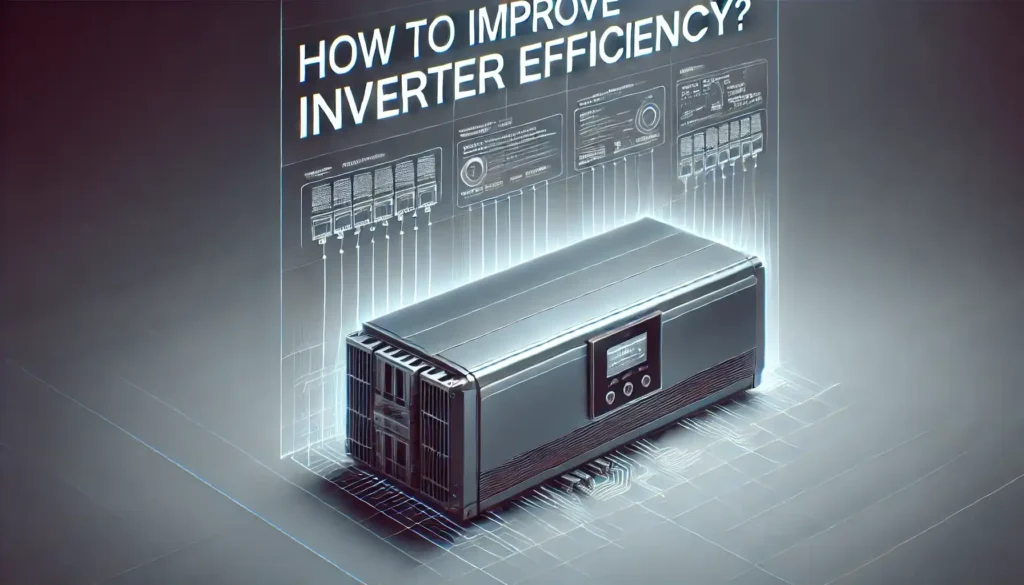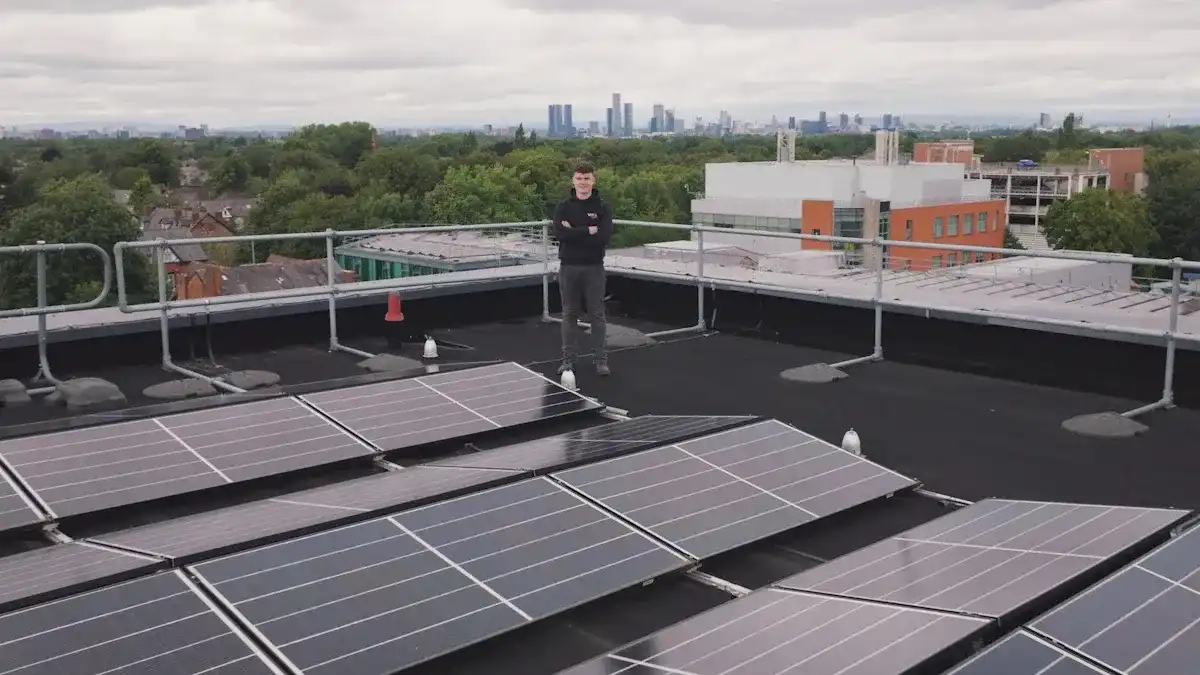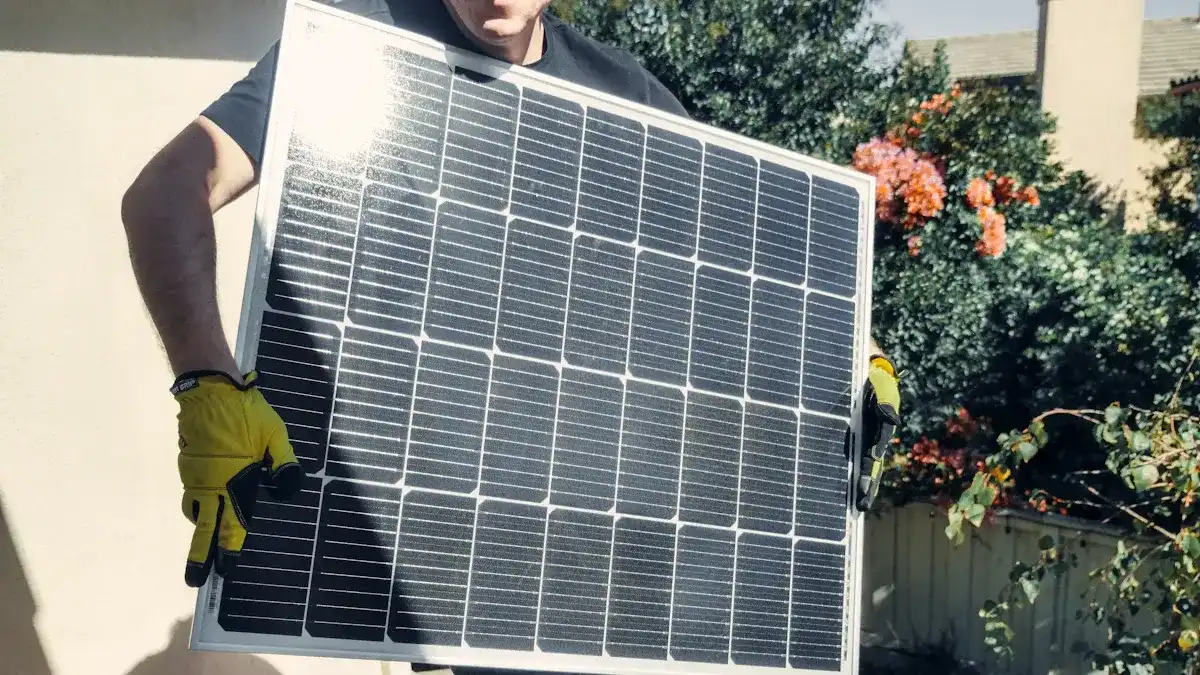Improving the efficiency of the inverter has significant benefits for you. It helps reduce energy waste, lower electricity bills, and extend the lifespan of the system. Some simple measures, such as using appropriate components or maintaining cleanliness, can significantly improve efficiency. Careful maintenance can keep the system running smoothly, save energy, and create more value for you.
Key points
- Use high-quality parts and appropriate sizes to improve efficiency. This can save energy and reduce electricity bills.
- Maintain inverter cooling through good airflow and temperature control. A better cooling system can prevent overheating and extend its service life.
- Regularly clean the inverter terminals and check the battery. These simple steps can help your inverter work properly and save energy.
What is the definition of inverter efficiency
The efficiency of an inverter usually refers to the ratio of the effective power output to the input power when the inverter converts direct current (DC) into alternating current (AC). Simply put, the higher the efficiency of an inverter, the more electrical energy is effectively converted into the required power, reducing losses.
Inverter efficiency (%)=(input DC power/ output AC power) × 100
For example, if an inverter inputs 100 watts of DC power and outputs 90 watts of AC power, its efficiency is 90%
Key factors for improving efficiency
High quality parts and correct dimensions
Using high-quality and appropriately sized components can improve the efficiency of the inverter. Materials such as silicon carbide (SiC) and gallium nitride (GaN) semiconductors can reduce energy waste. These materials perform better at high temperatures and high power, and are more efficient than older semiconductors. Choosing the appropriate switch can also reduce heat and improve performance.
The correct size helps the inverter process power smoothly. The following tips can help you better determine the size:
| Sizing Tip | Explanation |
|---|---|
| Match inverter power ratings | Make sure it handles the highest expected load. |
| Temperature derating | Choose an inverter 1.2 times bigger than summer needs. |
| Maximum demand estimation | Use tools to find the highest continuous power demand. |
Ventilation and temperature control
The environment can affect the operational performance of the inverter. High temperature areas and poor ventilation can cause the inverter to overheat, resulting in energy waste. To avoid this situation, please follow the following steps:
Place the inverter in a cool, ventilated place away from direct sunlight.
Leave space between inverters to prevent heat accumulation.
Use cooling materials to assist in ventilation.
Reasonably planning the environment can keep your inverter efficient and extend its lifespan.
Make the inverter meet the energy demand
Choosing the appropriate inverter size is very important. Small inverters are difficult to meet power demand, while large inverters waste energy. Use tools to check your energy usage. Then, choose an inverter that meets your highest power demand. This can avoid overload and maintain the good operation of the inverter.
Technical methods to improve efficiency
Soft switching method
Soft switches reduce energy loss by lowering voltage stress. It uses special circuits to achieve smoother conversion, thereby reducing heat and improving efficiency. For example, testing on Hillcrest inverters showed that their losses were reduced by 90% compared to the old system. It also reduces dV/dt by 90%, making it very suitable for high-power applications. This method can improve the performance of high-frequency or high-voltage systems.
Advanced modulation techniques (such as PWM)
Pulse width modulation (PWM) helps inverters work better. It meets power requirements by changing the voltage pulse width, thereby reducing energy loss. Space Vector Pulse Width Modulation (SVPWM) can more efficiently utilize DC voltage. Research has shown that SVPWM can reduce losses under varying power levels. The efficiency of LS-PWM and other hybrid methods can reach up to 98.4% under specific loads. Using these methods can save energy and improve inverter performance.
Multi level inverter design
Multi level inverters can generate smoother voltage waveforms, thereby reducing distortion and improving efficiency. They can also reduce component pressure and are very suitable for high-power systems. The silicon carbide components used in these designs perform better than traditional silicon components. Choosing a multi-level inverter can improve energy utilization efficiency and extend the service life of the system.
Maintenance and operational skills to improve efficiency
Regularly clean and inspect terminals
It is crucial to keep the inverter terminals clean. Dirt or rust on battery terminals can hinder current flow, thereby reducing the performance of the battery and inverter. Rusty terminals can also slow down charging speed and damage the battery. To avoid this situation, please check the terminals regularly and clean them gently. Mix baking soda and water to remove dirt. After cleaning, add a protective layer to prevent rusting. These simple steps can help your inverter work better and extend its lifespan.
Maintain the battery
The battery is the key to the performance of the inverter. If you are using lead-acid batteries, please check the battery water level regularly. Low water level can damage the battery and reduce energy storage. Please only use distilled water to fill the battery. Tap water contains minerals that may damage batteries. Do not overfill, otherwise it may cause leakage. Please store the battery in a cool and dry place to avoid overheating. Proper maintenance of the battery can maintain its strength and help the inverter function properly.
Manage loads and avoid overloading
Understanding the size of the load and balancing the load of the inverter is very important. Overload can cause excessive current during startup, thereby reducing performance. To avoid this situation, please carefully calculate your energy needs. Ensure that the inverter can meet the highest demand. The inverter works best at higher loads, but the load should be within its limit range. For example:
| Efficiency Type | Description |
|---|---|
| Maximum Conversion | Shows how well the inverter changes energy at its best. |
| European Efficiency | Measures how well it works under different load levels. |
| Load Impact | Inverters perform better with higher loads, but not too high. |
By managing the load and avoiding overuse, you can improve the efficiency of the inverter and extend its lifespan.
Summarize
There are many benefits to improving the operational efficiency of inverters. The use of high-quality components, adoption of new methods, and regular maintenance can improve the performance of inverters. This can save energy and improve performance. In the long run, you can save a lot of money. Research has shown that utilizing energy storage more and reducing dependence on the power grid can be helpful. Even though installation costs are high and energy prices continue to rise, this still holds true. A high-quality inverter system can bring you value and make you worry free.
If you have a purchasing need for solar inverters, you can identify the ONESTO brand. ONESTO is a professional inverter manufacturer that provides you with a variety of specifications and high-quality products. And it’s also the most favorable price. Provide 5 to 10 years of quality warranty service
FAQ
What is the standard range of inverter efficiency?
The efficiency of inverters is usually above 90%, and the most advanced inverters can reach 98% or even higher.
How to improve the heat dissipation efficiency of inverters?
Increasing the area of the heat sink, optimizing the design of the heat dissipation system, and adopting methods such as air cooling or water cooling systems can effectively improve the heat dissipation efficiency of the inverter.
How often should you clean the inverter terminals?
Clean the terminals every three months. This can prevent rust and maintain normal current flow.
Will using an inverter of the wrong size damage your system?
Yes, small inverters may overheat. Large inverters can waste energy. Please make sure to choose the appropriate size according to your own needs.
What is the best method for managing inverter loads?
Uniformly distribute electrical appliances. Avoid overloading the inverter. Use energy-saving equipment to reduce the burden.
The following information may be of interest to you
How to choose to install a solar inverter
Why Your Solar Energy Setup Requires a Combiner Box
What Causes Circuit Breaker Overheating and How to Prevent It





